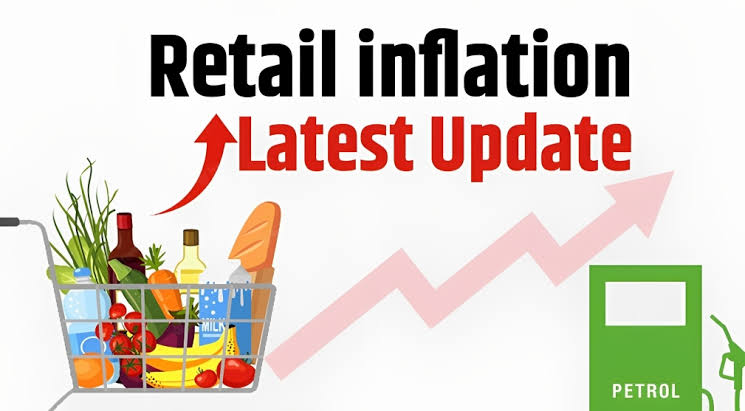Add your promotional text...
Retail Inflation in India: Trends, Impacts, and Measures to Control
Discover the latest insights on retail inflation trends in India, its impacts on the economy and individuals, and key measures implemented by the Reserve Bank of India to control inflation. Stay informed to navigate the economic landscape effectively.
EDITORIAL
Divyanshu Pandey
5/14/20243 min read


As 6.04 percent in April, compared to 6.82 percent in the previous month. This decline can be attributed to the easing of vegetable prices during the month. However, the inflation rate for pulses and products remained high at 14.34 percent, indicating continued pressure on these food items. The fuel and light category witnessed a significant increase in inflation, reaching 2.87 percent in April compared to 2.42 percent in March. This rise can be attributed to the increase in fuel prices during the month. The inflation rate for housing remained stable at 3.84 percent. On the other hand, the clothing and footwear category witnessed a decline in inflation, reaching 4.78 percent in April compared to 4.91 percent in March. This decrease can be attributed to the end of the winter season and the clearance of winter clothing stocks. The inflation rate for miscellaneous items increased to 6.32 percent in April compared to 5.91 percent in March. This rise can be attributed to the increase in prices of personal care items and transport and communication services. Overall, the easing of retail inflation in April can be seen as a positive development for the Indian economy. It indicates that the inflationary pressures are under control, providing some relief to consumers. However, it is important to monitor the inflation rate closely in the coming months to ensure that it remains within the tolerance range set by the Reserve Bank of India.
The Impact of Retail Inflation
Retail inflation has a significant impact on the economy and the lives of individuals. Here are some key implications of retail inflation:
1. Purchasing Power: High inflation erodes the purchasing power of individuals. When prices rise, consumers have to spend more on basic necessities, leaving less money for discretionary spending. This can lead to a decrease in overall consumption and economic growth.
2. Interest Rates: Inflation has a direct impact on interest rates. When inflation is high, central banks often raise interest rates to control the money supply and curb inflationary pressures. Higher interest rates make borrowing more expensive, which can dampen investment and economic activity.
3. Cost of Living: Retail inflation directly affects the cost of living for individuals. Rising prices of essential goods and services can put a strain on household budgets, especially for low-income households. This can lead to a decline in living standards and an increase in poverty levels.
4. Business Environment: High inflation can create an uncertain business environment. Fluctuating prices make it difficult for businesses to plan their operations and make investment decisions. This can lead to a decrease in business confidence and investment, impacting economic growth.
5. Government Policies: Inflation also influences government policies. High inflation rates often prompt governments to implement measures to control prices, such as subsidies or price controls. These policies can have unintended consequences and distort market dynamics.
Measures to Control Inflation
To control inflation, the Reserve Bank of India (RBI) implements various monetary policy measures. Here are some key measures taken by the RBI:
1. Interest Rate Adjustment: The RBI adjusts the repo rate, which is the rate at which it lends to commercial banks. By increasing the repo rate, the RBI makes borrowing more expensive, which reduces the money supply and helps control inflation. Conversely, the RBI can decrease the repo rate to stimulate borrowing and economic activity.
2. Open Market Operations: The RBI conducts open market operations by buying or selling government securities. When the RBI sells securities, it reduces the money supply, which helps control inflation. Conversely, when the RBI buys securities, it injects money into the economy, stimulating economic activity.
3. Reserve Requirements: The RBI sets reserve requirements for commercial banks, which determine the amount of reserves banks must hold. By increasing reserve requirements, the RBI reduces the money supply and controls inflation. Conversely, the RBI can decrease reserve requirements to increase the money supply and stimulate economic activity.
4. Exchange Rate Management: The RBI manages the exchange rate to control inflation. By adjusting the value of the Indian rupee relative to other currencies, the RBI can influence the prices of imported goods. A stronger rupee can help reduce inflation by making imports cheaper.
5. Supply-Side Measures: In addition to monetary policy measures, the government implements supply-side measures to control inflation. These measures include increasing agricultural productivity, reducing supply chain bottlenecks, and promoting competition in key sectors.
Conclusion
The marginal easing of retail inflation in April is a positive development for the Indian economy. It indicates that inflationary pressures are under control, providing some relief to consumers. However, it is important to continue monitoring the inflation rate closely to ensure that it remains within the tolerance range set by the RBI. Additionally, the government and the RBI should continue implementing measures to control inflation and promote sustainable economic growth. By maintaining price stability, the Indian economy can create a favorable environment for businesses and individuals alike.
